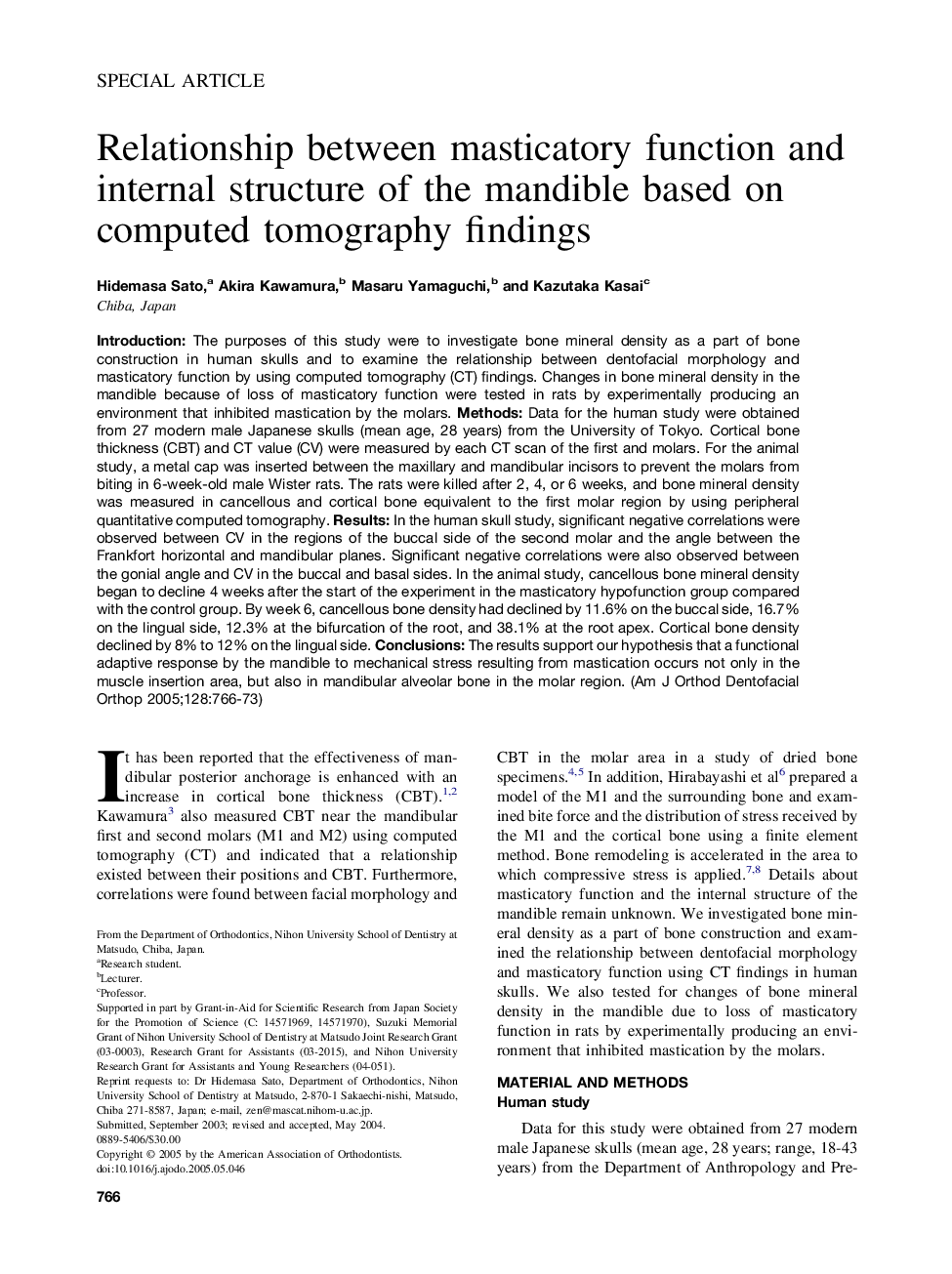| Article ID | Journal | Published Year | Pages | File Type |
|---|---|---|---|---|
| 9992506 | American Journal of Orthodontics and Dentofacial Orthopedics | 2005 | 8 Pages |
Abstract
Introduction: The purposes of this study were to investigate bone mineral density as a part of bone construction in human skulls and to examine the relationship between dentofacial morphology and masticatory function by using computed tomography (CT) findings. Changes in bone mineral density in the mandible because of loss of masticatory function were tested in rats by experimentally producing an environment that inhibited mastication by the molars. Methods: Data for the human study were obtained from 27 modern male Japanese skulls (mean age, 28 years) from the University of Tokyo. Cortical bone thickness (CBT) and CT value (CV) were measured by each CT scan of the first and molars. For the animal study, a metal cap was inserted between the maxillary and mandibular incisors to prevent the molars from biting in 6-week-old male Wister rats. The rats were killed after 2, 4, or 6 weeks, and bone mineral density was measured in cancellous and cortical bone equivalent to the first molar region by using peripheral quantitative computed tomography. Results: In the human skull study, significant negative correlations were observed between CV in the regions of the buccal side of the second molar and the angle between the Frankfort horizontal and mandibular planes. Significant negative correlations were also observed between the gonial angle and CV in the buccal and basal sides. In the animal study, cancellous bone mineral density began to decline 4 weeks after the start of the experiment in the masticatory hypofunction group compared with the control group. By week 6, cancellous bone density had declined by 11.6% on the buccal side, 16.7% on the lingual side, 12.3% at the bifurcation of the root, and 38.1% at the root apex. Cortical bone density declined by 8% to 12% on the lingual side. Conclusions: The results support our hypothesis that a functional adaptive response by the mandible to mechanical stress resulting from mastication occurs not only in the muscle insertion area, but also in mandibular alveolar bone in the molar region.
Related Topics
Health Sciences
Medicine and Dentistry
Dentistry, Oral Surgery and Medicine
Authors
Hidemasa Sato, Akira Kawamura, Masaru Yamaguchi, Kazutaka Kasai,
